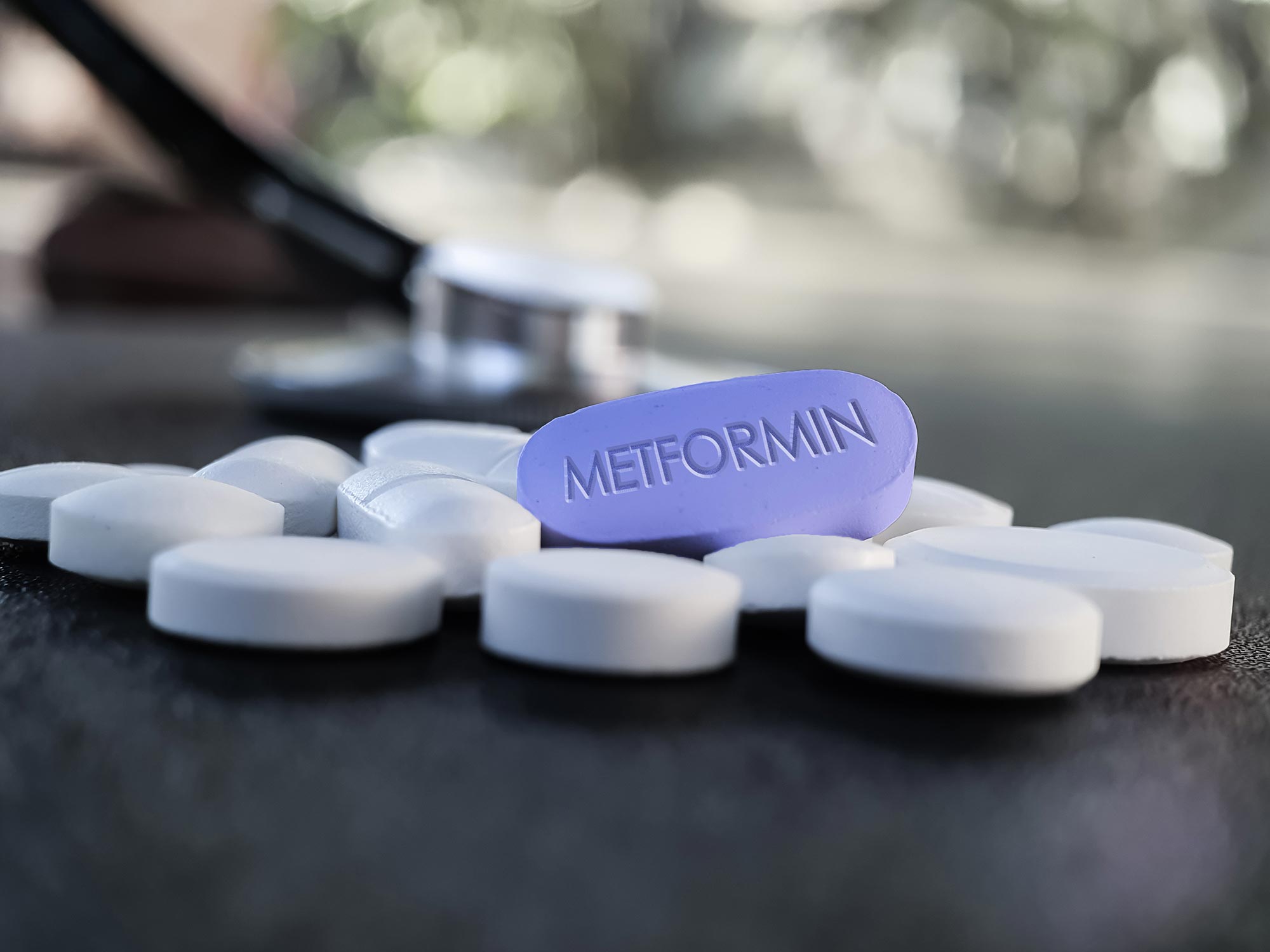Scientists found that metformin acts in the brain through Rap1 to control blood sugar. This insight could lead to more precise diabetes treatments.
Metformin has been the standard treatment for type 2 diabetes for more than six decades, yet scientists still do not fully understand how it works. A team from Baylor College of Medicine, working with international collaborators, has now identified an unexpected factor in its effectiveness: the brain. Their findings reveal a brain pathway involved in metformin’s glucose-lowering action, pointing to new strategies for treating diabetes with greater precision. The study was published in Science Advances.
“It’s been widely accepted that metformin lowers blood glucose primarily by reducing glucose output in the liver. Other studies have found that it acts through the gut,” explained Dr. Makoto Fukuda, associate professor of pediatrics – nutrition at Baylor and the study’s corresponding author. “We looked into the brain as it is widely recognized as a key regulator of whole-body glucose metabolism. We investigated whether and how the brain contributes to the anti-diabetic effects of metformin.”
The researchers concentrated on a small protein called Rap1, located in a region of the brain known as the ventromedial hypothalamus (VMH). They discovered that metformin’s ability to lower blood sugar at clinically relevant doses depends on suppressing Rap1 activity in this brain area.
Rap1 protein and experimental evidence
To explore this further, the Fukuda lab and collaborators studied genetically engineered mice that lacked Rap1 in their ventromedial hypothalamus (VMH). These mice were placed on a high-fat diet to simulate type 2 diabetes. When treated with low doses of metformin, their blood sugar levels did not decrease. In contrast, other diabetes drugs, including insulin and GLP-1 agonists, remained effective.
To strengthen the evidence that the brain plays a central role, the researchers administered extremely small amounts of metformin directly into the brains of diabetic mice. This approach produced a marked reduction in blood sugar, even when the doses were thousands of times lower than those typically given orally.
Neuronal activation in the hypothalamus
“We also investigated which cells in the VMH were involved in mediating metformin’s effects,” Fukuda said. “We found that SF1 neurons are activated when metformin is introduced into the brain, suggesting they’re directly involved in the drug’s action.”
Using brain slices, the scientists recorded the electrical activity of these neurons. Metformin made most of them more active, but only if Rap1 was present. In mice lacking Rap1 in these neurons, metformin had no effect, showing that Rap1 is essential for metformin to “switch on” these brain cells and lower blood sugar.
“This discovery changes how we think about metformin,” Fukuda said. “It’s not just working in the liver or the gut, it’s also acting in the brain. We found that while the liver and intestines need high concentrations of the drug to respond, the brain reacts to much lower levels.”
Although few anti-diabetic drugs act on the brain, this study shows that widely used metformin has been doing so all along. “These findings open the door to developing new diabetes treatments that directly target this pathway in the brain,” Fukuda said. “In addition, metformin is known for other health benefits, such as slowing brain aging. We plan to investigate whether this same brain Rap1 signaling is responsible for other well-documented effects of the drug on the brain.”
Reference: “Low-dose metformin requires brain Rap1 for its antidiabetic action” by Hsiao-Yun Lin, Weisheng Lu, Yanlin He, Yukiko Fu, Kentaro Kaneko, Peimeng Huang, Ana B. De la Puente-Gomez, Chunmei Wang, Yongjie Yang, Feng Li, Yong Xu and Makoto Fukuda, 30 July 2025, Science Advances.
DOI: 10.1126/sciadv.adu3700
This work was supported by grants from: National Institutes of Health (R01DK136627, R01DK121970, R01DK093587, R01DK101379, P30-DK079638, R01DK104901, R01DK126655), USDA/ARS (6250-51000-055), American Heart Association (14BGIA20460080, 15POST22500012) and American Diabetes Association (1-17-PDF-138). Further support was provided by the Uehara Memorial Foundation, Takeda Science Foundation, Japan Foundation for Applied Enzymology and the NMR and Drug Metabolism Core at Baylor College of Medicine.
Never miss a breakthrough: Join the SciTechDaily newsletter.
